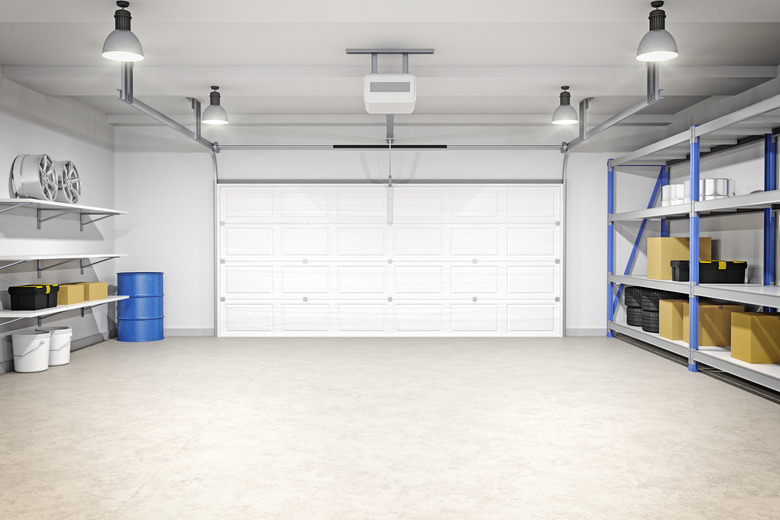What Type Of Paint Do You Use On A Garage Wall?
We may receive a commission on purchases made from links.
Finishing a garage can completely transform the space when done correctly, but which garage paint type should you use, and how do you choose between interior or exterior paint for garage walls? Before you begin any home renovation project, it's important to do your research and understand the basics of how different paint types work.
Choosing Interior or Exterior Paint for a Garage
Choosing Interior or Exterior Paint for a Garage
When painting walls, you have two options: oil- or latex-based paints. Latex-based paints give off fewer fumes and have fewer synthesized chemicals when compared to oil-based paints. Using them keeps your space safer for family members, pets, and little ones running around.
It is recommended to use interior paint since exterior paint produces more fumes. Exterior paint is fine to use outdoors where the vapors disperse quickly, but it should never be used indoors where the air is circulated or in an area with little to no airflow.
Painting on Drywall, Concrete, and Wood
Painting on Drywall, Concrete, and Wood
If you're painting on drywall, you'll need to prepare the surface with a drywall primer before applying any latex paint. This will ensure that your walls come out smooth and even. Latex paint without a primer will dry bumpy and leave a jagged surface if you apply it directly to drywall. Use a dedicated drywall primer, not a primer-and-paint-in-one product. Priming drywall also helps prevent liquid and fungal buildup.
If you're painting directly onto concrete blocks, you can use a concrete sealer to waterproof and paint your walls all at once. It's an easy process that requires cleaning your walls, filling in any gaps with hydraulic cement, and applying the sealant. That's it. It's that simple. If you have plywood panels on the walls, don't paint them, as you won't end up with a nice finished look afterward. Instead, finish the walls with drywall before applying any paint.
Preparing Your Walls
Preparing Your Walls
Before you begin painting, first remove everything touching the walls of your garage. Drape coverings over everything of value within your garage that you wouldn't want to be spattered with paint. Cover any surface that shouldn't get painted with painter's tape, especially any light sockets or electrical outlets. Also, use painter's tape to edge any surface that you don't want painted, like windows and ceilings. Finally, cover the floor to prevent paint from spilling on it.
Make sure that you have proper ventilation throughout the room. This could mean opening doors and windows to the outside or setting up fans in the garage to help move the air around. Even the fumes from latex paint aren't healthy when inhaled.
In order to remove any grime, dirt, and dust that have accumulated, clean the walls and ceiling with a shop-type vacuum. Apply a cleaning solution of dish soap and water to remove any remaining dirt and grease. Wait until all the surfaces are fully dry before applying any paint.
Applying Primer and Paint
Applying Primer and Paint
Start by putting primer on your walls with a brush anywhere close to the edges of the walls. This will ensure that you don't overpaint or drip onto areas that shouldn't be painted. After that, use a paint roller to apply primer to the rest of the wall.
When the primer has dried, administer the paint in the same manner as the primer. Begin at the highest point and work downward to the lowest point, catching any drips that might occur. Apply two thin layers of paint, pausing between layers to allow the first layer to dry.
